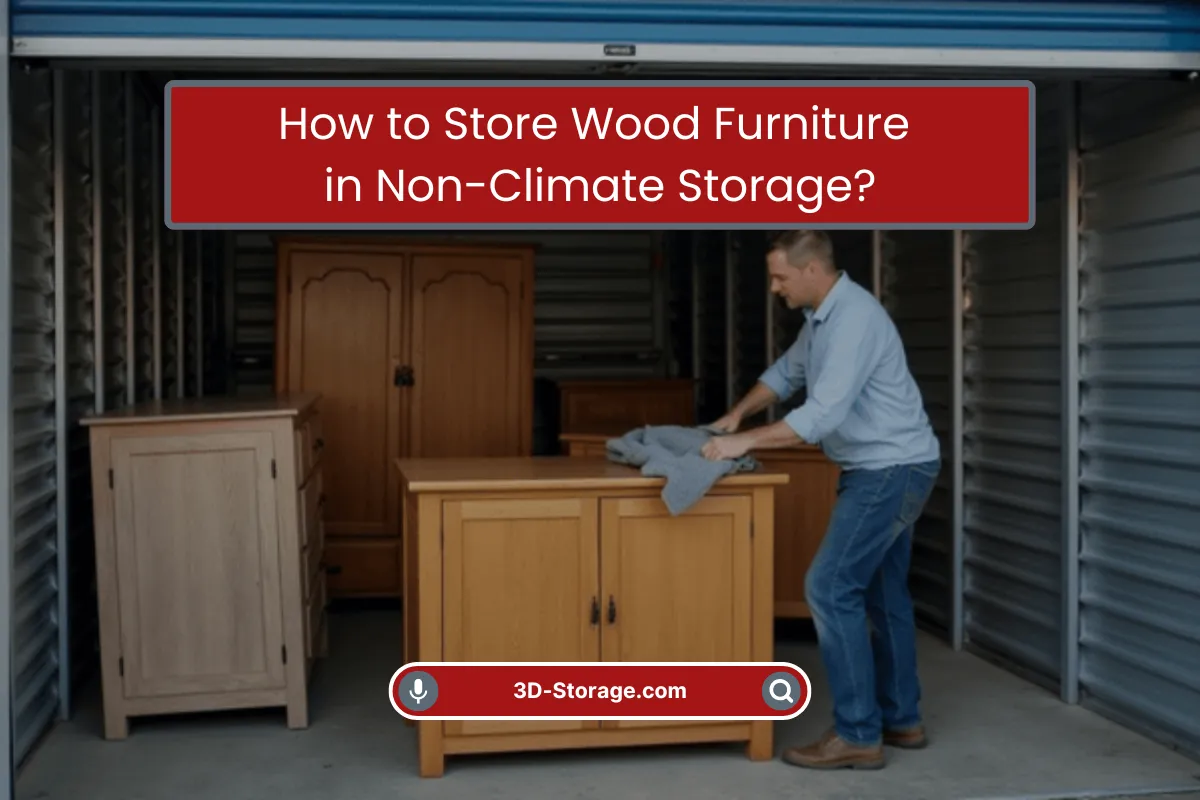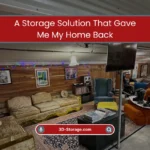I’ve been managing 3D storage for 15 years now, and let me tell you – nothing makes my heart sink like seeing someone haul in beautiful wood furniture wrapped in nothing but hope and a bedsheet. I’ve watched too many gorgeous pieces get ruined by well-meaning but misguided storage attempts. So let’s cut through the nonsense and talk real-world solutions.
The Cold Hard Facts About Wood and Storage
Wood isn’t just some inert material – it’s basically a sponge with delusions of grandeur. Here’s what really happens when you store it wrong:
- The Great Expansion-Contraction Saga
Your dresser isn’t just sitting there peacefully – it’s constantly breathing. In humid months, it swells up like it’s holding its breath. Come winter, it shrinks like wool socks in a hot wash. Do this cycle enough times and boom – cracks you could lose a quarter in. - The Mold You Didn’t Invite
That fuzzy white stuff isn’t some harmless patina – it’s literally eating your furniture. And once it’s in the grain? You might as well start pricing replacements. - Bug Buffets
Termites don’t care that your table was a family heirloom. To them, it’s just an all-you-can-eat wood chip buffet with free housing.
What Actually Works (From Someone Who’s Done It 1000 Times)
1. Cleaning: Not Just for Neat Freaks
Last month, a customer brought in a gorgeous mahogany sideboard covered in what looked like three generations of furniture polish. Guess what happened? The finish turned gummy and attracted every dust particle in a five-mile radius.
Here’s how we do it right:
- Ditch the lemon Pledge – it’s basically bug bait.
- Mix 1 part distilled white vinegar to 4 parts water (the cheap stuff works fine).
- Wipe with the grain using an old t-shirt (terry cloth leaves lint).
- Dry immediately like you’re racing the clock.
Pro Tip: If there’s white water rings, mayonnaise actually works (no, really). Smear it on, let it sit overnight, wipe off. Don’t ask me why it works – it just does.
2. Taking Things Apart: Not Just for IKEA Furniture
Saw a guy last year try to store a fully assembled four-poster bed. Came back to what looked like modern art – all twisted legs and misaligned joints.
Must-Do Disassembly:
- Table leaves out and stored vertically.
- Headboards and footboards separated.
- Any removable shelves taken out.
- Mirrors removed and wrapped separately.
Hardware Tip: Put screws in labeled pill bottles with a piece of the wood taped to it. Sounds extra until you’re trying to remember which screw went where.
3. Wrapping: The Difference Between Protection and Ruin
Had a customer last winter who wrapped everything in black trash bags “to keep out light.” Came back to a sauna effect that warped everything beyond recognition.
The Right Way:
- First Layer: Old cotton sheets (not polyester – it traps moisture).
- Second Layer: Bubble wrap only on sharp edges.
- Final Layer: Loose plastic sheeting (if you can’t slide your hand under it, it’s too tight).
What to Avoid:
- Moving blankets from questionable sources (might have moth eggs).
- Newspaper (ink transfers in humidity).
- That “space blanket” material (creates condensation).
4. The Floor is Lava (For Your Furniture)
Concrete might look solid, but it’s basically a moisture sponge. Saw a beautiful cherrywood desk get ruined because it sat directly on the floor for a year.
Best Options To Store Furniture in Non-Climate Controlled Space:
- Wooden pallets (the kind without chemical treatments).
- PVC pipes laid parallel about 12″ apart.
- Even those interlocking foam floor tiles work in a pinch.
Worst Ideas:
- Cardboard (turns to mush).
- Just putting it on 2x4s (not enough air flow).
- “It’ll be fine directly on the concrete” (famous last words).
5. Moisture Control That Doesn’t Suck
After trying every product on the market, here’s what actually moves the needle:
What Works:
- Silica gel canisters (the kind for gun safes, not the tiny shoe packets).
- Plain clay kitty litter in breathable bags (cheap and effective).
- Charcoal briquettes in knee-high pantyhose (weird but works).
What’s a Waste:
- “Moisture absorbing” crystals (just overpriced silica gel).
- Essential oil diffusers (does nothing for humidity).
- Baking soda (great for fridges, useless here).
Why is 3D storage Different?
We’re not just another storage facility – we actually care about your stuff:
- Concrete floors are sealed – Not that porous nonsense that wicks moisture.
- Real pest control – Not just spraying when there’s complaints.
- Actual ventilation – Unlike those stuffy metal boxes down the road.
- 24/7 monitoring – So we catch problems before they ruin your things.
The One Rule You Can’t Break
Come check on your stuff every 2-3 months. I know life gets busy, but here’s what that quick visit can prevent:
- Catch moisture issues before they become disasters.
- Spot pest problems while they’re still small.
- Adjust wrapping as seasons change.
And here’s my promise: If you follow these steps and still have problems, come find me at 3D Storage. I’ll personally help you figure out what went wrong and how to fix it.
Because at the end of the day, your furniture isn’t just “stuff” – it’s your history, your memories, and pieces of your life. And that’s worth protecting properly.








0 Comments